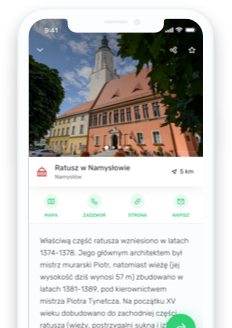In the Middle Ages, the site of the Eclectic palace in Ziemiełowice was a lime tree grove with a small, masonry shrine which was later turned into a small church. The property was not developed further until the 17th century, when the distillery and the smithy were built; the smithy has survived to this day and can now be seen in the Opole Open-Air Museum of Rural Architecture.
The year 1830 was an important date for Ziemiełowice. At the time, part of the property belonged to the Bishop of Breslau, and the rest of the estate was managed by a clerk named von Methner. The palace was built at the initiative of his descendant, Rudolf von Methner.
The architectural style of the two-storey building combines Renaissance Revival and Baroque elements; the palace has a characteristic octagonal steeple with an onion dome. The palace survived both World Wars virtually intact and was subsequently taken over by the State Treasury. It was used as a school and the offices of Voluntary Labour Corps. In the 1980s it was abandoned and gradually fell into ruin. A new life of the palace began in 2006 when the whole complex was purchased by the Praski family from Opole, who are slowly restoring it to its former glory.
According to a legend popular among the locals, there is a secret passage connecting the palace to the Medieval church in the village. The walled-up entrance at the bottom of the palace cellars suggests that the legend might actually contain a grain of truth.




 Powiat
Powiat Gmina
Gmina Gmina
Gmina Gmina
Gmina